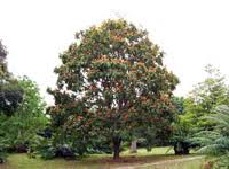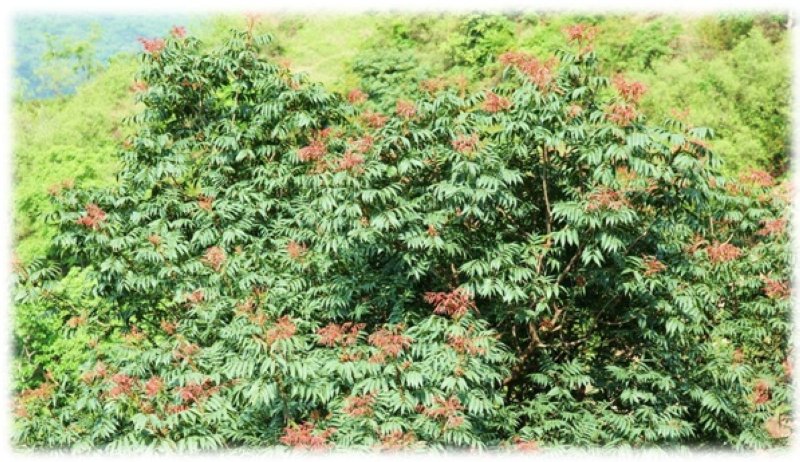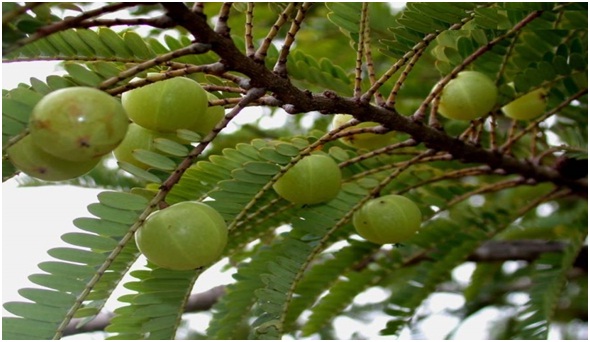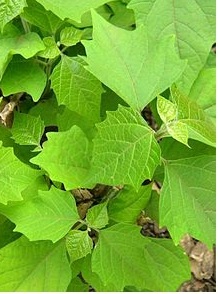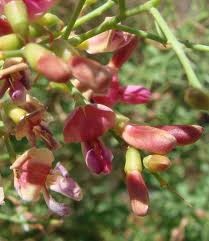BOTANICAL NAME : Saraca indica Linn.
Saraca asoca Roxb. De. Wilde
FAMILY : Fabaceae
Regarding the drug at hand, a clear description from Atharva Veda Parishishta indicates that Ashoka is known to Indians since vedic literature.
Charaka described it as an anodyne while Sushrutha mentioned it under Rodhradi guna. In this context , it is very important to note that Ashoka is not reported as an emmanagogue , oestrogenic or uterine tonic as claimed by the herbal industry. It is having styptic property like ergot preparations and it exhibits potent oxytocin like activity. Therefore one must be cautious while using its bark in therapeutics.
At present P. longifolia is popular as Ashoka tree since it is widely grown in the gardens. But the original material is also available abundantly.
LITERARY REVIEW
Charaka described it as an anodyne while Sushrutha mentioned it under Rodharadhi guna. Vrinda Madhava for the first time indicated it in Rakta Pradara. Vanjula is supposed to be the synomyn of Ashoka as well as Tinisa. Under Nyagrodhadi guna it will be wise to accept vetasa instead of Ashoka.
GANAS OR VARGAS
According to Charaka -Kashayaskandha,
Vedanasthapana
According to Susrutha – Lodhradi
According to Dhanwanthari Nighantu -Amradi Varga Nighantu
According to Bhavaprakasha Nighantu -Pushpa Varga
According to Raja Nighantu -Karaveeradi Varga
According to Kaiyadeva Nighantu -Oushadhi Varga
According to Sodhala Nighantu -Amradi Varga
According to Priya Nighantu -Harithakyadi Varga.
SYNONYMS
Ashoka: That which relieves or sufferings, especially of women.
Hemapushpa: Golden yellow flowers.
Thamrapallava :Tender leaves are coppery reddish in colour.
Kankeli : Plant bears a pleasant look.
Vanjula : Holds sheetala gunas
Pindapushpa : Flowers occur in clusters
Gandhapushpa : Flowers have pleasant smell or fragrance.
Madhupushpa : Flowers during vasantha or spring.
Sthreepriya : Liked by women, as it is useful in gynaecological
disorders.
VERNACULAR NAMES
- English – Ashoka Tree
- Hindi – Ashoka
- Malayalam – Ashokam
- Marathi – Ashoka
- Tamil – Ashogham
- Telugu – Ashokapatta
- Gujarathi – Ashoka
- Kannada – Ashokadama
PROPERTIES
Rasa – Kasaya, Tikta
Guna – Laghu, Ruksha
Virya – Sheetha
Vipaka – Katu
Doshaghnata – Kaphapittahara
KARMA
- Aarthavashamana – Dahaprashamana
- Rakthasthambanashodana – Sramahara
- Shothahara – Vishagna
- Krimigna – Vedanasthapana
- Grahi – Varnya
- Mutrala – Hrdya
- Asmarinaashana – Garbashayahitha
PRAYOGA
- Raktapradara
- Swethapradara
- Kashtarthava
- Garbhashaya shaithilya vikara
- Athisara
- Pravaahika
- Krimiroga
- Thrishna
- Daha
- Srama
- Shotha
- Raktapitta
- Mutrakrichra
- Asmari
- Mutraghata
- Udararoga
- Gulma
- Adhmana
- Vedanapradhana vikara
- Shosha
- Raktavikara
- Varnavikara
- Raktadosha
PRAYOGYANGA
Bark
Flowers
Seeds
DOSAGE
Twak Kashaya – 50 – 100 ml
Pushpa choorna – 1 – 3 g
Beeja choorna – 1 – 2 g
VISHISTA YOGAS
- Ashokarishtam
- Ashokaghritham
THERAPEUTIC USES
- Plant is useful as an astringent drug which is generally recommended as a uterine tonic and frequently used in menorrhagia and uterine affections.
- Bark is cooling to the bowels, antihelminthic, anti dysenteric and antidote to poisons. It cures sore throat, aching, bronchitis, indigestion, heaviness, ulcers, boils, psoriasis, inflammations, leprosy, anaemia, leucoderma.
- It is useful to cure dyspepsia, thirst, and burning sensation, diseases of the blood and effect of fatigue.
- It is given in enlargement of abdomen, colic, piles and bloody discharges from the uterus. It is useful against tumours, ulcers.
- The bark is used internally in cases of menorrhagia and allied menstrual troubles.
- Useful in fractures of the bones.
- Beautifies complexion.
- Seeds are useful in urinary discharges.
- Bark is much used in treatment of uterine affections and is valued for menorrhagia. A decoction of bark preparation in milk is orally given as a specific recommendation.
- Liquid extract of the bark which is strongly astringent has been found to get good results considerably when administered in cases of menorrhagia.
- Bark, flowers and fruits are used in combination with other drugs for the treatment of snake bite and scorpion sting.
- The decoction of the bark is also used as an efficacious remedy for haemorrhoids and blood dysentery.The fluid extract of the flowers is given in haemorrhagic kind of dysentery in doses. The powder of dried flowers is also given in diabetes.
- The bark is antidote to poisons, useful in stones of kidney and urinary bladder and used as a diuretic and anti inflammatory drug.
- Bark is also useful in recurring hemorrhoid tumors in female subjects.
- There is external application in conditions of pains and cases of sting poisons.
RESEARCH
- The effect of the administration of an extract of bark was studied in mice that were treated with a dose of 2 mg / kg of cisplantin i.p for 5 days. The extract of bark partially prevented the decrease in body weight, hemoglobin levels and leucocytes counts caused by 2 mg / kg of cisplantin. The i.p administration of bark extract also significantly prolonged the life span of cisplantin treated mice almost 3 fold. In contrast, an extract of flowers only tended to protect from cisplantin induced falls in hemoglobin levels and leucocyte counts.
- Flower extract administered orally indicated 50% in Dalton’s lymphoma indicated ascites and sarcoma 180 tumour cells at a concentration of 38 micrograms and 54 micrograms respectively with no activity against normal lymphocytes but preferential activity for lymphocytes derived from leukemia patients.
- Flower bud extract inhibited such Esch. Coli, Salm.viballerup, Vibrio cholerae, Shigella dysenteriae and Shigella boydii and this inhibition were stronger than that of flower extract.
- A phenolic glycoside P2 showed highly potent and specific oxytocic activity in vitro and invivo on uteri of rat and isolated human myometrial strips and fallopian tube. P2 was active in remarkably low concentration and nontoxic to animals up to 250 mg/ kg.
- 2 crude glycosides isolated from bark exhibited uterine spasmogenic activity, both showed significant stimulant action on isolated uteri of rat, guinea pig, rabbit, dog and human, pure phenolic glycoside P2 was highly potent and showed consistent oxytocic activity.
- Ashoka stimulated the uterus making the contractions more frequent and prolonged without producing the tonic contractions like ergot or pituitary. It should therefore be proved useful in all cases of uterine haemorrhages, where ergot is indicated viz. menorrhagia , metorrhagia, post partum hemorrhage etc.
HOUSE HOLD REMEDIES
Specifically the bark is highly astringent of this tree and is a household remedy particularly for menorrhagia and leucorrhoea. It is orally administered as a decoction in these disorders. 3 ounces of bark is boiled in milk unequal quantity and 4 times water, till the total quantity is reduced to about 3 ounces. It is given in 2 or 3 doses. The treatment is to commence from the fourth day of the monthly period and to be continued till the excess bleeding is checked . A fresh decoction has to be prepared daily and administered every day.
- Flowers are pounded and mixed with water and used to treatment of haemorrhagic dysentery.
- The powder of the seeds is given orally in calculus and urinary disorders.

